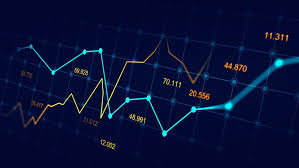
The Global Forex Trading Landscape: Insights and Strategies
The global forex trading market is one of the largest and most dynamic financial markets in the world, with a daily trading volume exceeding $6 trillion. This vast market operates 24 hours a day, allowing traders from different time zones to participate at any time. As the world becomes increasingly interconnected, understanding forex trading is essential for both individual investors and institutional traders. With technological advancements reshaping trading practices, now is a great time to dive into the complexities of forex trading. For beginners looking to enter this world, a global forex trading Crypto Trading App can be an excellent resource to get started.
The Basics of Forex Trading
Forex trading involves the buying and selling of currency pairs, with the aim of generating profits from fluctuations in currency values. The most commonly traded currencies are the US Dollar (USD), Euro (EUR), Japanese Yen (JPY), and British Pound (GBP). Each currency pair is represented with its own unique symbol (e.g., EUR/USD, GBP/USD). Traders speculate on whether a currency will rise or fall against another, which is a fundamental aspect of forex trading.
Major Players in the Forex Market
The forex market consists of various participants, including banks, financial institutions, corporations, and individual traders. Major central banks, such as the Federal Reserve and the European Central Bank, play a significant role in influencing currency values through monetary policy decisions. Additionally, hedge funds and other investment firms engage in forex trading to hedge against risks or speculate for profit.
Understanding Forex Pips and Spreads
In forex trading, the price movement is measured in pips (percentage in point). A pip represents the smallest price change in a currency pair that is typically reflected in the fourth decimal place (0.0001). Understanding pips is essential for calculating potential profits or losses. Furthermore, the spread is the difference between the buying price (ask) and the selling price (bid) of a currency pair. Spreads can vary depending on market conditions, broker policies, and liquidity.
Forex Trading Strategies
Successful traders often employ various strategies to maximize their profits while minimizing risks. Here are some popular forex trading strategies:
- Day Trading: Day traders buy and sell currency pairs within the same trading day, seeking to profit from short-term price movements.
- Swing Trading: Swing traders hold positions for several days or weeks to capitalize on expected price swings.
- Scalping: Scalpers make many trades throughout the day, looking to gain small profits from each transaction.
- Position Trading: Position traders maintain long-term positions based on fundamental analysis and longer-term market trends.
The Role of Technology in Forex Trading

In recent years, technology has transformed the forex trading landscape. The rise of algorithmic trading, automated systems, and advanced trading platforms has made it easier for traders to execute trades with speed and efficiency. Algorithmic trading uses mathematical models to identify trading opportunities and execute orders in real time, allowing for better risk management and reduced emotional strain on traders.
Forex Market Analysis
Successful forex trading often relies on thorough market analysis, which can be categorized into two main types: fundamental analysis and technical analysis.
Fundamental Analysis
Fundamental analysis focuses on the economic indicators that influence currency values. Factors such as interest rates, employment reports, inflation, and geopolitical events can significantly impact currency movements. By staying informed about these variables, traders can make educated decisions about when to buy or sell currencies.
Technical Analysis
Technical analysis, on the other hand, involves studying historical price charts and market trends to forecast future price movements. Traders use various technical indicators—such as moving averages, Relative Strength Index (RSI), and Fibonacci retracement levels—to identify potential entry and exit points for their trades.
Risk Management in Forex Trading
Effective risk management is crucial for success in forex trading. Traders should establish clear rules for their risk tolerance and employ techniques such as stop-loss orders to limit potential losses. Diversifying trading portfolios and setting realistic profit targets can also help mitigate risks.
Conclusion
The global forex trading market presents immense opportunities for traders of all levels. However, success in this market requires a deep understanding of the factors influencing currency values, as well as the development of effective trading strategies. By leveraging technology and employing sound analysis techniques, traders can navigate the complexities of forex trading and ultimately achieve their financial goals. Whether you are a beginner or an experienced trader, staying updated with the latest trends and continuously learning will be key to thriving in the fast-paced world of forex.